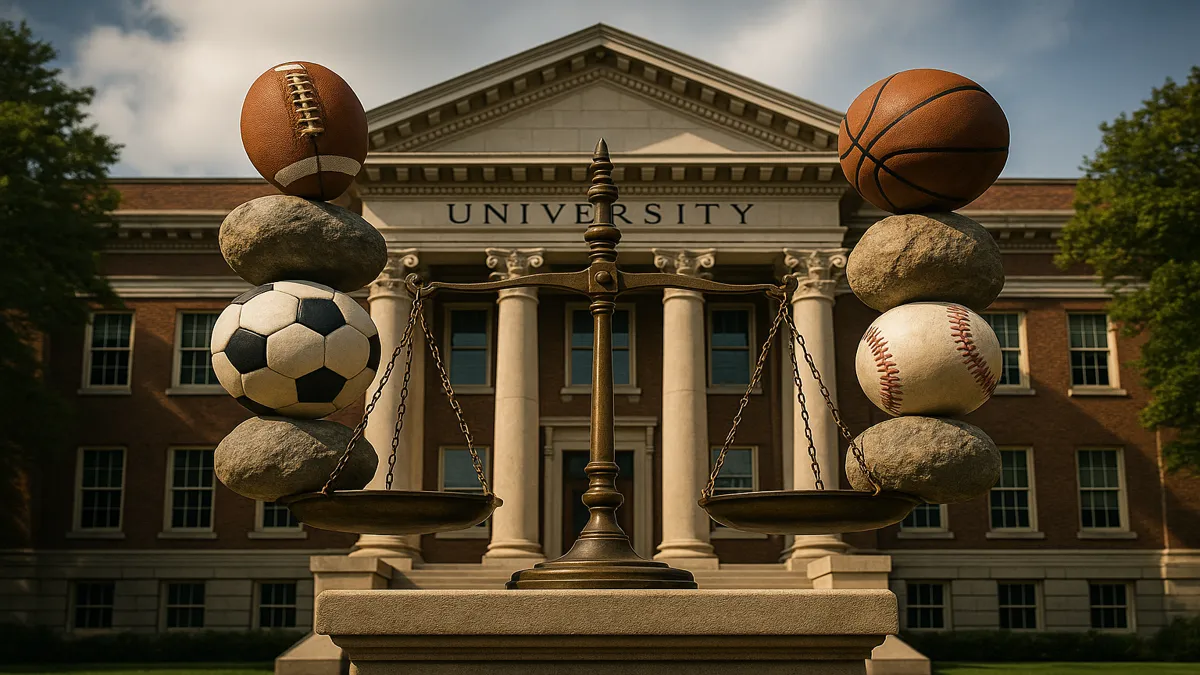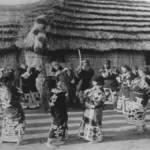The NCAA—short for the National Collegiate Athletic Association—remains the most influential body in American college athletics, governing over 1,100 institutions and nearly half a million student-athletes. Within the first hundred words: the NCAA is the nonprofit governing body that regulates college sports, oversees eligibility, manages rules enforcement, and stages dozens of national championships. Originally founded in 1906 to improve athlete safety, it has grown into a powerful organization balancing education, commerce, and athlete rights.
Today, the NCAA exists in a moment of profound transformation. Massive television revenues, landmark settlements, evolving athlete compensation models, and cultural debates about fairness and amateurism have reshaped the organization’s mission. Its most famous events—like March Madness—generate billions in economic impact and shape the identity of universities nationwide. Yet the same financial success invites scrutiny, litigation, and reform. From governance structures and divisional distinctions to Title IX developments and the historic NIL settlement, the NCAA sits at the center of a national conversation about who benefits from college sports—and who should. This article explores the institution’s history, financial footprint, regulatory complexities, controversies, and ongoing search for identity in an era where student-athletes hold more leverage than ever before.
Origins and Purpose
The NCAA traces its origins to early twentieth-century football safety concerns, when rising injuries prompted President Theodore Roosevelt to call for formal oversight. The result was the Intercollegiate Athletic Association of the United States (IAAUS), established in 1906 and later renamed the NCAA in 1910. Its earliest purpose was simple: standardize rules, protect players, and bring structure to chaotic intercollegiate competition.
By 1921 the NCAA held its first championship, marking the start of its national events model. Over time, the rise of television, scholarships, and large-scale athletics expanded its responsibility beyond safety. The NCAA became a regulator, event organizer, rule enforcer, and, eventually, a central mediator between academia and commercial sports. This foundational history underscores why debates about the NCAA’s mission remain emotionally charged: it was created to protect athletes, yet now oversees an industry often criticized for its economic imbalance.
Governance and Divisional Structure
To manage its immense membership, the NCAA is divided into three primary divisions—each with unique scholarship rules, institutional profiles, and competitive expectations. Division I includes large universities offering full scholarships; Division II typically features mid-sized schools with partial scholarship allowances; and Division III prohibits athletic scholarships, emphasizing academic life and amateur athletics. Each division operates with its own governance councils, allowing policies to reflect institutional realities.
This layered structure is intentional: a small Division III liberal arts college cannot be governed with the same financial expectations or competitive incentives as a major football university. Faculty representatives, athletic directors, compliance officers, and campus presidents all participate in policymaking. The system is complex but necessary—balancing academic priorities, financial demands, and institutional identities.
Table 1: Overview of NCAA Divisions
| Division | Scholarships Allowed | Typical Institution Size | Core Emphasis |
|---|---|---|---|
| Division I | Yes | Large universities | High-level competition & large revenues |
| Division II | Limited | Mid-sized colleges | Balanced athletics & academics |
| Division III | No | Smaller institutions | Student-athlete experience & academics |
Economic Realities and Commercial Pressure
The NCAA operates in a financial ecosystem shaped heavily by television contracts. The Division I men’s basketball tournament—better known as March Madness—accounts for the majority of NCAA revenue. Broadcasting rights, sponsorship deals, and event-related income fuel the organization’s annual budget and support institutional distributions.
This commercialization has raised ethical and structural questions: How should revenue be distributed? Should athletes receive a share? Are institutions too dependent on sports income? Economists criticize the NCAA as a cartel that restricts labor compensation while benefiting from athlete performance. For universities, the financial upside is enormous: visibility, enrollment boosts, alumni donations, and branding power. Yet these benefits complicate the NCAA’s original mission and create unavoidable tensions between athletics and academics.
Flagship Events and Cultural Imprint
The Division I men’s basketball tournament is the NCAA’s crown jewel. First held in 1939 with eight teams, it expanded to 16 in 1951 and eventually to 64 in 1985, with 68 teams participating since the introduction of the “First Four” in 2011. Its cultural significance is undeniable—bracket competitions, buzzer-beaters, Cinderella stories, and national attention draw millions of viewers each year.
Yet the NCAA oversees far more than March Madness. It sanctions 92 national championships across men’s, women’s, and co-ed sports. These events are not only competitive milestones but economic engines, drawing tourism, promoting regional identity, and fueling school pride. The breadth of championships underscores how deeply woven the NCAA is into American sports culture.
Athlete Eligibility and the Academic Standard
Eligibility is the NCAA’s link between academics and athletics. Student-athletes must satisfy coursework requirements, maintain GPA thresholds, and meet amateur-status standards. Historically, amateurism meant strict limitations on compensation—rules that sparked decades of criticism.
The NCAA defended amateurism as essential to preserving academic integrity and competitive balance. But as college sports revenues ballooned, the gap between athlete contribution and permissible compensation became increasingly controversial. Long before NIL reforms, critics argued that unpaid athletes performing in billion-dollar events was unsustainable and ethically inconsistent.
The NIL Era and the House Settlement
In 2025 the landscape changed dramatically. The NCAA approved a $2.8 billion settlement compensating athletes retroactively for restrictions on their name, image, and likeness rights. This settlement came after years of lawsuits, state-level legislation, and public pressure. Female athletes challenged portions of the settlement, citing Title IX implications and the need for equitable revenue distribution.
Starting in the 2025–26 academic year, universities may directly compensate athletes up to capped amounts—fundamentally altering the amateur model. These developments represent a historic shift toward athlete financial empowerment. The NCAA now faces the challenge of integrating compensation structures with institutional equity, competitive fairness, and compliance oversight.
Table 2: Key NCAA Milestones Over Time
| Year | Milestone | Importance |
|---|---|---|
| 1906 | Formation under IAAUS | Beginning of formal athletic regulation |
| 1921 | First NCAA championship | Launch of national event model |
| 1973 | Three-division system established | Institutional alignment across levels |
| 2011 | March Madness expands to 68 teams | Increased visibility and revenue |
| 2025 | NIL settlement approved | Athlete compensation reshaped |
Expert Perspectives
Experts across sports economics and policy often highlight three central themes when discussing the NCAA:
“College athletics now straddle education and business—this duality drives the NCAA’s most complicated debates.”
“The three-division system exists for fairness, yet competitive and economic disparities still challenge the NCAA’s governance.”
“With NIL and settlement reforms, the NCAA must reconcile its past commitments with new expectations from athletes and the public.”
These perspectives illustrate the widening gap between traditional amateur ideals and modern economic realities.
Title IX, Inclusion, and Program Expansion
Gender equity remains a central pillar of NCAA policy. In 2025 the association officially approved women’s wrestling as its 91st championship sport, set to begin in 2026. This milestone not only expands athletic opportunity but signals a renewed commitment to women’s sports as revenue, participation, and cultural representation continue to grow.
Inclusion efforts extend beyond gender. International athletes, LGBTQ+ athletes, and students from varying socioeconomic backgrounds require updated policies that reflect the evolving demographics of college campuses. Yet each expansion requires universities to invest in facilities, staff, and compliance, reinforcing the NCAA’s complex identity as an agent of both opportunity and regulation.
Governance Challenges and the Road Forward
The NCAA’s future will be defined by how it navigates institutional disparities, commercial dependence, athlete compensation, and shifting expectations. Large schools with major football programs face drastically different pressures than small Division III colleges. Meanwhile, legal challenges continue to reshape what is permissible in athlete compensation and eligibility.
Competitive balance, athlete welfare, compliance burdens, and the future of amateurism remain areas of tension. The NCAA must redefine its identity in an era where student-athletes have more influence, public awareness has grown, and financial pressures shape decision-making. Whether it evolves successfully—or faces structural overhaul—will depend on its ability to embrace transparency, equity, and forward-looking governance.
Takeaways
- The NCAA was founded to reform early football safety issues and now governs modern college sports.
- Its three-division system reflects differences in mission, budget, and student-athlete experience.
- March Madness remains its most financially significant event, generating substantial revenue.
- NIL reforms and the $2.8 billion settlement transformed athlete compensation.
- Title IX pressures and new women’s sports reflect growing commitments to gender equity.
- Critics challenge commercialization, amateurism, and unequal revenue distribution.
- The NCAA must navigate legal, financial, and cultural transformation to stay relevant.
Conclusion
For more than a century, the NCAA has defined the structure and spirit of college athletics in the United States. Its policies shape not only games and championships, but academic expectations, institutional identity, and cultural traditions. Yet the organization now stands in a landscape where athlete rights, legal challenges, and financial pressures demand reinvention. Navigating the path ahead will require balancing the institution’s historical values with its modern responsibilities. Whether the NCAA emerges stronger or fractured will determine the future of college sports—and the role athletics play in American higher education. It is a pivotal moment, one requiring not only reform but clarity of mission.
FAQs
What is the NCAA?
It is the National Collegiate Athletic Association, which governs college athletics and sets eligibility, competition, and compliance standards.
How do the NCAA divisions differ?
Division I features large schools with full scholarships, Division II offers limited scholarships, and Division III provides none, emphasizing academics.
What is NIL?
Name, Image, and Likeness rules allow athletes to earn compensation through endorsements, personal branding, and sponsorship agreements.
Why is March Madness so influential?
It drives major revenue, national attention, and cultural engagement, making it the NCAA’s most financially important event.
What was the House Settlement?
A 2025 agreement allocating $2.8 billion in compensation to past athletes restricted by previous NIL policies.
References
- Aspire Atlantic. (2021). A brief history of the NCAA. https://www.aspireatlantic.com/post/a-brief-history-of-the-ncaa
- Britannica. (2025). National Collegiate Athletic Association. https://www.britannica.com/topic/National-Collegiate-Athletic-Association
- MaryGrove Mustangs. (n.d.). NCAA: An overview of governance and rules. https://www.marygrovemustangs.com/ncaa-an-overview-of-governance-and-rules.html
- MGoBlog. (2023). The NCAA: A history, its fall, and how it can be rebuilt. https://mgoblog.com/diaries/ncaa-history-its-fall-and-how-it-can-be-rebuilt
- The Guardian. (2025). Why female athletes are challenging the NCAA’s $2.8bn settlement. https://www.theguardian.com/sport/2025/jun/14/ncaa-nil-settlement-title-ix-explained











